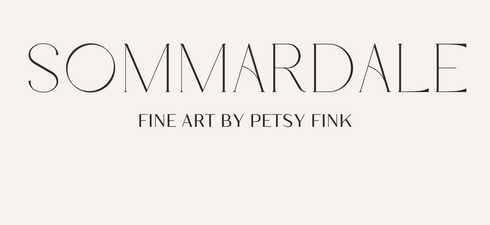In the world of interiors and art commissioning, there is a pervasive assumption, quietly repeated but rarely questioned: the buyer values only the surface.
Form over feeling, trend over tenderness, beauty over the artist’s emotional input. The myth persists that a piece is only a decorative asset, a visual tick box for a brief moment of approval, the emotional input of the creator irrelevant.
I find this logic incomplete. I create with all my heart, for those who feel deeply, for those who seek refuge from the turmoil of modern life, and for those who wish to inhabit spaces that carry not just beauty, but emotional resonance. I design to move people toward stillness, toward clarity, toward a quiet centre they can call their own. Now, tell me, does that carry emotional weight?
The hidden cost of visual-only thinking
A room assembled purely for appearances can be luminous, timely, and technically perfect, yet it fails in the most intimate measure of all: how it makes you feel. Spaces like this leave occupants restless, alert to their surroundings but untouched by them.
In private homes, a living room may look immaculate but feels emotionally empty. In wellness clinics, lobbies may impress but cannot soothe. In retreats, guest rooms may be Instagram-ready yet fail to invite introspection. In these environments, the visual trumps the visceral, and the result is exhaustion rather than restoration.
This is the gap I seek to fill, with deliberate, emotionally-weighted design. The difference is subtle but transformative.
Designing for the emotional architecture of a space
The work begins with listening. I invite clients into dialogue, not a transaction. We speak of light, scale, and place, but also of intention, mood, and the qualities a space should hold when the doors close behind the last visitor.
What do you wish to feel when you wake? What do you wish your guests to carry with them when they leave? The answers shape every decision: the choice of image, the tonal range, the surface of paper, the depth of shadow and highlight.
Every detail is considered, every material tested. Archival papers are selected for tactility and longevity, frames for restraint and proportion, placement for resonance and repose. Nothing is imposed, nothing is hurried. The art is never an object of imposition; it becomes a companion, a measured pause, a portal into a state of stillness.
In private homes, this process transforms walls into anchors. Art is no longer an accessory, but a companion that gathers the room around a shared sense of calm. In wellness and healthcare environments, it restores trust in the space before a word is spoken, softening edges, calming nerves. In yoga or meditation studios, it deepens presence, guiding practice through the silent energy it carries. Across contexts, the same principle holds: emotional weight matters as much as visual weight.
Proof in method
My practice is rooted in this principle. Abstract nature photography in black and white allows me to distil visual complexity into essential feeling. Each composition is chosen with deliberation, framed with intention, and printed with the care of archival precision. Shibui informs every choice, not in aesthetics alone, but in philosophy. It demands subtlety, endurance, and depth.
I have witnessed the transformation this method enables. A hotel lobby that once felt busy and impersonal now invites lingering pauses. A collector’s study that felt scattered now holds a quiet centre. The subtle interplay of light, shadow, texture, and composition alters the atmosphere without demanding attention. Visitors and residents alike experience not just sight, but resonance, a sense of having arrived in a place that honours both space and soul.
The difference is not immediately measurable, it is experiential, cumulative, and enduring. Those who live or work within these environments experience a shift in awareness, a capacity to rest, a readiness to engage with life from a grounded place.
This is the quiet return on investment of emotional design.
A journey from noise to presence
Choosing emotionally-weighted art requires patience. It requires moving beyond impulse or aesthetic checklist. It asks for trust! Trust in the artist’s process, and in the possibility that art can serve as both mirror and guide. The reward is profound: spaces that do more than please the eye, spaces that restore, support, and transform.
Contrast this with the alternative: a room filled with pieces selected purely for appearances. Even the most exquisite items, disconnected from emotional intention, fail to deliver presence. They leave the viewer restless, perpetually aware of what is missing rather than present in what is.
Invitation to reflection
To those who curate spaces for living, healing, or reflection: consider the emotional architecture of your interiors. How would your spaces feel if each object, each image, each surface carried purpose and presence alongside form? What would it mean to choose companions for your walls rather than ornaments, to prioritise resonance over trend, depth over immediacy?
I create with heart for those who seek more than visual pleasure. Spaces designed with emotional weight do not shout; they allow silence to speak, and in that silence, transformation occurs. The conversation begins not with price, not with scale, but with the rhythms, moods, and intentions that define your space.
If you are curious about how stillness, presence, and emotional resonance can inhabit your interiors, consider what it would mean to invite these qualities deliberately, and to allow your spaces to carry you, quietly, through years of experience.
Warmly,
Petsy

